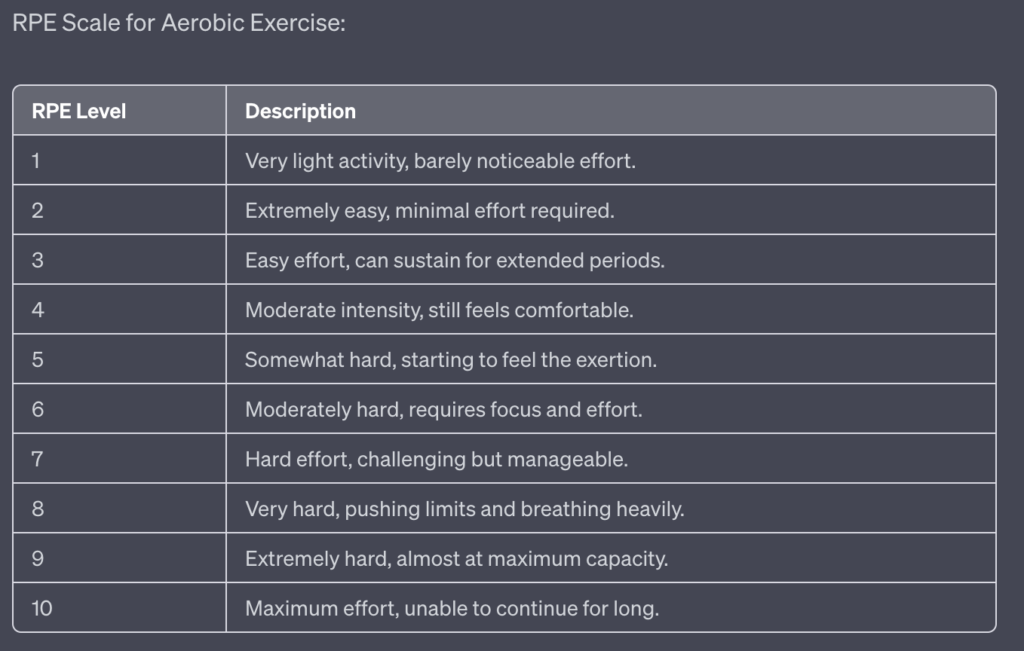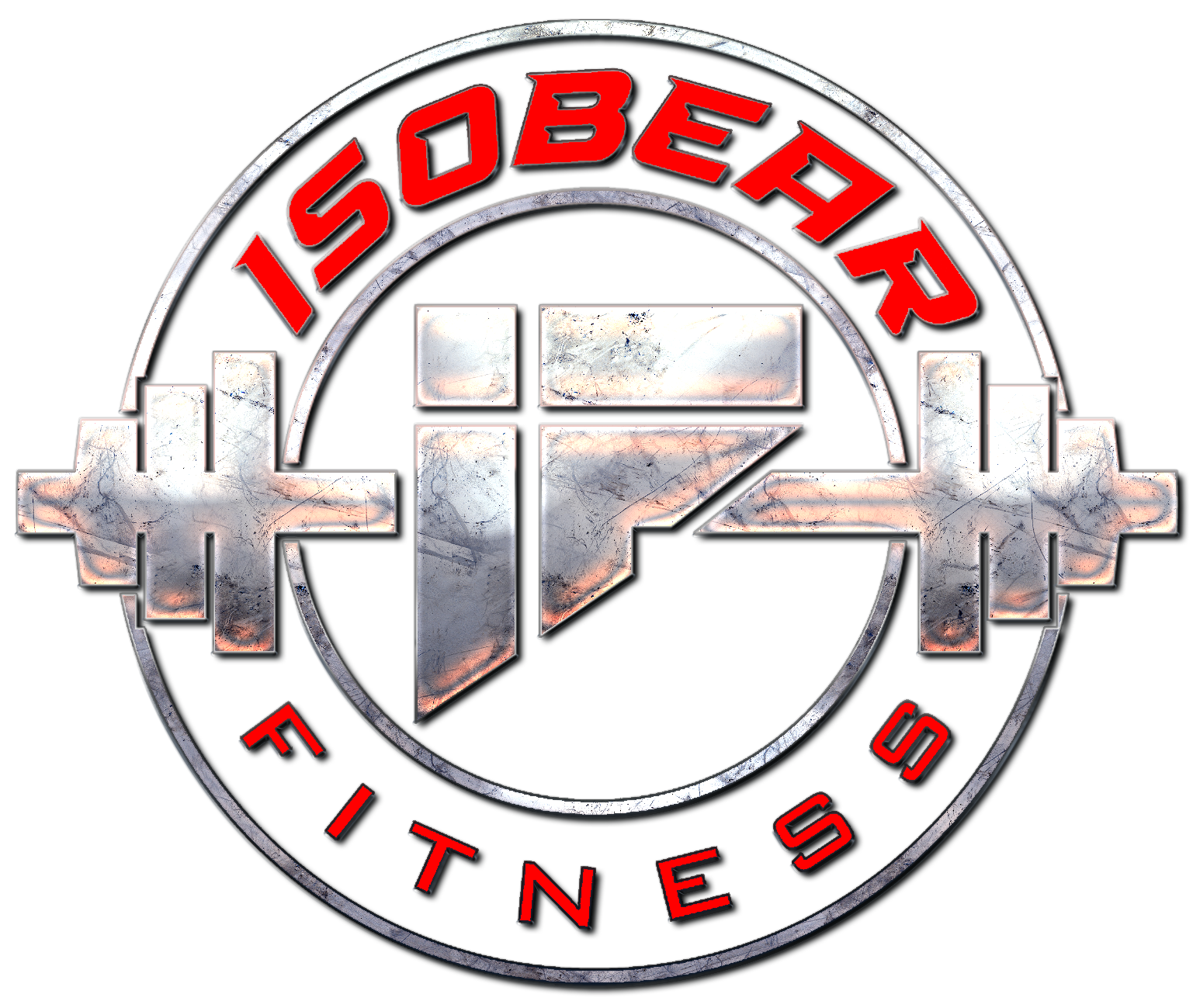As an individual passionate about improving your running performance, understanding and applying the Rate of Perceived Exertion (RPE) in your training could be a game-changer. RPE is a vital tool that’s just as effective as heart rate monitors or GPS watches when it comes to monitoring your exercise intensity. It’s a subjective measure of how hard you feel like your body is working during exercise, and it can help you tune into your body’s signals and adapt your running speed or intensity accordingly. The beauty of RPE is that it takes into consideration your mental and emotional state, not just your physical state, providing a more holistic approach to training.
Imagine being able to master your running pace without constantly checking your watch, or having the ability to push yourself just the right amount to avoid injuries. You can achieve all of this by understanding and incorporating RPE into your training routine. By paying attention to your body’s signs and adjusting your effort level accordingly, you’re not only likely to enhance your running performance but also to reduce the risk of overtraining and injury. It’s about time we gave the power back to our bodies, allowing them to guide us on our running journeys. Embrace RPE, because your body knows best.
Overview of Rpe
Understanding the concept of Rate of Perceived Exertion (RPE) is crucial for honing your workout regimen. Learning how to use RPE can be instrumental in achieving your fitness goals. Calculating RPE during workouts assists in tracking your progress, ensuring you’re not overexerting yourself. The benefits of RPE training are manifold, from enhancing physical performance to boosting mental stamina. Most importantly, RPE plays a vital role in injury prevention, helping maintain a safe, yet effective exercise routine. Dive into our comprehensive guide and unlock the potential of RPE in your fitness journey.
What Is RPE?
As we delve deeper, let’s pivot our focus to better understanding the concept of Rate of Perceived Exertion (RPE). This is a crucial cornerstone of effective training and workout regimes.
So, what exactly is RPE? It’s an important measure used in fitness training that helps gauge the intensity of your workout and how hard your body is working. Rather than solely focusing on numbers like heart rate or calories burned, RPE takes into account your personal perception of your physical effort, strain, discomfort, and fatigue during a workout. It’s based on the understanding that only you can truly perceive how hard your body is working.
In essence, RPE is your personal fitness barometer, a way to measure and understand your body’s responses to exercise. It’s your body’s way of communicating with you, telling you when to push harder or when to hold back, ensuring you train smartly and effectively.
Don’t underestimate the power of this tool. RPE can be a game-changer in your fitness journey, helping you to truly connect with your body, understand its signals, and optimize your workouts. By understanding what RPE is, you’re taking an essential step towards a healthier, fitter, and more attuned version of yourself.
How to Use Rpe
Bearing in mind the fundamental definition of RPE, you might be wondering how exactly to apply this concept to your workout routine. Believe it or not, RPE is an incredibly easy and flexible tool to integrate into your daily exercises.
To begin with, listen to your body. This might seem cliché, but when it comes to RPE, it’s the golden rule. Every individual’s perception of exertion is unique; therefore, it’s critical to tune into your unique bodily signals. The aim is to rate your exertion on a scale of 1 to 10, where one signifies minimal effort and ten indicates maximum effort.
Now hold on a second; you might be thinking that this sounds too subjective. But here’s the kicker: RPE is designed to be subjective. It allows you to tailor your workout to your personal fitness levels and goals.
For an even more precise approach, try pairing RPE with heart rate monitoring. By correlating your perceived exertion with your physiological response, you can create a workout regimen that’s both effective and safe.
Remember, RPE isn’t about pushing yourself to the brink of exhaustion. It’s about finding a balance between effort and sustainability. So, the next time you hit the gym, give RPE a try.
Calculating Rpe During Workouts
Now, aren’t you curious about how to calculate RPE during your workouts? Imagine having a tool at your disposal that allows you to measure your exertion level and adjust your workout intensity accordingly. That’s exactly what RPE can offer!
To calculate RPE during workouts, you simply need to listen to your body. How hard do you feel like you’re working? On a scale of 1–10, with 1 being no effort at all and 10 being the most effort you could possibly exert, where do you fall? For example, if you’re casually walking, your RPE might be a 2 or 3. If you’re sprinting at full tilt, you’re probably at a 9 or 10.
Remember, the beauty of the RPE scale is that it’s subjective. It’s based on your perception of your effort, not some external standard. This means it can accommodate variables like fatigue, stress, and even the weather. Your RPE is a powerful, personalized tool that enhances your training.
Consider this. By regularly calculating and monitoring your RPE, you can ensure you’re working at the right intensity for your goals and avoid overexertion and injury. It’s a win-win!
Benefits of Rpe
Utilizing the Rate of Perceived Exertion (RPE) can drastically enhance your training. It allows you to accurately measure intensity, providing a comprehensive view of your workout, and tracking progress over time, fostering improvement and growth. Embracing RPE can significantly increase motivation, turning a mundane routine into an exciting challenge. With RPE, you can expertly align your running pace, fostering a more effective regimen. Lastly, you can personalize RPE to your unique needs, making fitness more attainable and sustainable.
Accurately Measure Intensity
Dialing up the intensity, let’s examine how RPE can be a game-changer in your fitness journey. Being able to accurately measure intensity is a primary benefit of the RPE scale.
Imagine being in control of your workouts, knowing exactly how hard you’re pushing your body. With the RPE scale, you’re able to gauge the intensity of your workout on a scale of 1 to 10. You’ll feel empowered, as you not only understand your body’s responses but also have the tools to manage them effectively.
Consider the potential for injury when you push beyond your limits without realizing it. RPE helps prevent this risk. By listening to your body and adjusting your workout intensity using RPE, you can avoid overtraining and reduce the chance of injury.
Doesn’t that sound like a smarter way to train? It gives you a way to stay in tune with your body, pushing when you can and easing off when you need to.
In essence, RPE equips you with a reliable and personalized tool to assess your workout intensity. It’s not just about working harder; it’s also about working smarter. And, believe it or not, this could make all the difference in your fitness journey.
Track Progress over Time
Continuing our exploration of RPE, let’s delve into how this tool can be instrumental in tracking your progress over time.
Imagine this: You’ve been working out diligently for a few weeks. Yet you’re not quite sure if your efforts are paying off. Here’s where RPE comes to the rescue:
With RPE, you can literally see your progress. As your training progresses, you should notice a decrease in your RPE for the same workout. This signifies that your fitness level is improving. You’re getting stronger and more efficient. Isn’t that the kind of tangible progress we all crave?
And guess what? There’s more! Not only does RPE show you how far you’ve come, but it also provides a benchmark for where you’re going. If you’re able to maintain a lower RPE at a higher intensity, it signifies you’re ready to take your training up a notch.
Having this kind of data-driven insight is crucial for making informed decisions about your training. No more second-guessing or feeling lost. With RPE, you have a reliable tool to track your progress and guide your future training.
In essence, RPE takes the guesswork out of your fitness journey, making it a more efficient, rewarding experience.
Increase Motivation
Imagine the thrill of witnessing your fitness level surge like never before. This is not a mere daydream; it’s the reality that RPE can bring to life. And guess what? RPE can significantly boost your motivation levels.
It’s all about setting tangible goals and working toward them. RPE enables you to set realistic targets based on your perceived effort. By providing you with the tools to gauge your exertion levels accurately, RPE empowers you to take charge of your workouts. Now, isn’t that a game-changer?
Consider this, the feeling of accomplishment, when you hit your RPE target, can give you an incredible sense of achievement. This can, in turn, fuel your motivation to push harder and go further. You begin to see the fruits of your labor, and that’s an exhilarating feeling.
Moreover, RPE can help shatter the plateau effect. Instead of becoming disheartened when you don’t see immediate results, RPE teaches you to focus on the effort, not just the outcome. It’s about recognizing that every step of the journey counts and celebrating the small victories along the way.
In this way, RPE not only increases your motivation but also enhances your overall workout experience.
Disadvantages of Rpe
Subjective assessments pose a major drawback to RPE, as they are open to personal interpretation and bias. This lack of objectivity is especially problematic for beginner athletes, who might not accurately gauge their exertion levels, leading to potential injuries. Even seasoned athletes can fall prey to overestimation or underestimation of effort, making RPE unreliable. Furthermore, inconsistencies in RPE among different exercises further question its validity. We must advocate for more objective, precise methods of tracking effort and performance to ensure safety and accuracy in our fitness regimes.
Subjective Assessments
Imagine the frustration of an athlete who, despite their best efforts, finds their performance plateauing or even deteriorating. This is a potential reality with the use of Rate of Perceived Exertion (RPE).
Let’s delve into the heart of the problem. The first major downside of RPE is its inherently subjective nature. It relies heavily on an individual’s perception of exertion, which can vary greatly from person to person and even from day to day. This subjectivity can lead to inconsistencies and inaccuracies in assessing one’s workout intensity.
Look at it this way, imagine asking a child and an adult the same question: “On a scale of 1-10, how hard are you working?” The answers will likely vary significantly despite them performing the same task. The same disparity can occur among athletes, making it difficult to standardize training intensity.
Moreover, while some individuals may have a keen sense of their exertion, others might struggle to accurately gauge their effort. This could lead to inefficiencies in training regimes and hinder progress.
In a nutshell, the subjectivity of RPE assessments may lead to misinterpretations and inconsistent results, making it a less reliable method for all athletes.
Not Suitable for Beginner Athletes
While it’s undeniable that RPE presents numerous advantages, let’s flip the coin and explore the less favorable aspects. Particularly, it’s essential to understand why RPE may not be the most suitable method for beginner athletes.
Pay attention to this: RPE is a subjective measure, and as such, it requires a certain level of familiarity and understanding of one’s body and its limits. Beginner athletes, who are still getting acquainted with their bodies’ responses to different exercise intensities, may find it challenging to accurately assess their exertion levels.
Imagine being a novice in the gym and being asked to rate your effort on a scale of 1 to 10. You might rate a certain workout as an 8, while a more experienced athlete would rate it a 5. This discrepancy can lead to ineffective workout sessions and slower progress.
What’s more, the risk of injury escalates for beginners using RPE. Misjudging their own capacity could lead them to push beyond their limits, potentially causing strains or other injuries.
So, if you’re a beginner, consider choosing other methods of intensity measurement until you gain more experience. RPE can be a valuable tool, but it’s essential to use it responsibly and appropriately.
Potential for Injury
While the benefits of RPE are undeniably attractive, it’s important to face the flip side of the coin: the potential for injury. Listen up, because this is vital for your health and performance.
RPE, by its very nature, requires the athlete to push through perceived exertion. This can be a double-edged sword. Yes, it can lead to improved performance and fitness levels. But, it can also lead to overexertion and, consequently, injury.
Imagine you’re at the gym, pushing past the pain barrier because your RPE tells you to. You’re feeling invincible, but guess what? Your body might be silently suffering. Over time, this can lead to overuse injuries, which are not only painful but can also set back your training progress significantly.
Don’t underestimate the risk. A study published in the Journal of Sports Sciences revealed that athletes who continuously train at high RPE levels are more prone to injuries.
And here’s the kicker: The injury risk is not just physical. Overexertion can lead to mental burnout, leading to decreased motivation to exercise.
In conclusion, while RPE can be a valuable tool, it’s crucial to balance it with a healthy respect for your body’s limits.
Setting Rpe Goals
In creating RPE Goals, it’s crucial to establish short- and long-term goals that align with your running ability. Be open to adjusting these goals as your fitness level evolves over time. Tracking progress is not merely a formality but a valuable tool to measure your performance and growth. As you advance, adapting your RPE Goals becomes vital to pushing your boundaries. Moreover, RPE Goals for Beginner Runners are a stepping stone to a more challenging fitness journey, designed to inspire perseverance and dedication. Embrace the process and see a transformation in your running performance.
Create Short- and Long-Term Goals
Now that we’ve examined the potential pitfalls of RPE, let’s shift gears. Are you ready to leverage the power of RPE for your running regime? Buckle up, and let’s dive into how to create effective short- and long-term RPE goals.
The first step in your fitness journey is to set clear and attainable goals. Aim too high, and you risk burnout or injury. Aim too low, and you might not reach your potential. A smart way to approach this is by setting short-term RPE goals. These should be achievable within a few weeks or months. They give you immediate targets to aim for and can quickly boost your motivation and confidence.
But don’t stop there. You also need a long-term vision. Where do you see your running potential in a year or two? Setting long-term RPE goals helps you stay focused on the bigger picture and ensures that your short-term victories are steps toward a larger triumph.
Remember, it’s not enough to just have goals. They must be well-defined and realistic. Be specific about the RPE level you aim to reach and the timeframe in which to achieve it. Ambiguity is the enemy of progress, so avoid broad or vague goals.
In the end, it’s all about balance.
Adjust Goals as Needed
Now, just imagine being on a journey, passionately chasing a goal you set, only to realize it’s unattainable. Devastating, isn’t it? This is why adjusting goals as needed is crucial when employing the RPE method in your running journey.
Suppose this: You started with an RPE of 7 for your 5k runs. But, despite your efforts, you’re consistently hovering around an 8 or 9. Instead of becoming disheartened, you should view this as an opportunity to reassess and adjust your goal.
Remember, the beauty of the RPE system lies in its flexibility. If your current goals are causing stress instead of motivation, it’s time to make some tweaks. Adjusting your RPE goal, say from 7 to a less strenuous 8 or 9, can make your runs more enjoyable and achievable, which in turn, boosts your motivation and progression.
“Adjust and adapt” should become your mantra on this running journey. Change is not a sign of failure, but an indicator of growth and flexibility. It’s a sign that you’re listening to your body and understanding your unique capabilities better. *So embrace change, adjust your goals as needed, and watch yourself evolve as a runner.
Track Progress over Time
While the downsides of RPE can seem daunting, the key to successful implementation lies in a methodical approach. This approach includes tracking your progress over time.
You might wonder, Why is tracking progress so important? The answer lies in the power of feedback. Feedback gained from tracking can provide valuable insights into your training habits, allowing you to tweak your routine for maximal effectiveness. The process of tracking your progress not only quantifies your efforts but also helps you visualize your growth.
Imagine this: You’ve been training for months, but without tracking, you might feel like you’re running in place, never truly knowing how far you’ve come. But with consistent tracking, you see your steady improvement, your progressing strength, and your increasing endurance. It’s like a mirror reflecting your efforts, your struggles, and, most importantly, your triumphs.
Therefore, we urge you to track your RPE regularly. Whether it’s daily, weekly, or monthly, choose a frequency that suits you. Utilize fitness apps or traditional pen and paper, but remember, consistency is key. Let tracking be your compass, guiding you to reach your RPE goals.
Remember, progress is more than just numbers.
Choosing Appropriate Paces
In “Choosing Appropriate Paces,” it’s crucial to first consider the individual’s goals. This guides your choices toward personalized, effective workouts. Ensuring exercises match the desired intensity level is also paramount. If you’re a beginner, don’t leap into high-intensity workouts; consider your experience level. One strategy, Utilizing Heart Rate Zones, offers an evidence-based approach for setting perfect paces. Remember, as your fitness improves, so should your pace. Adapting Paces as Fitness Improves is a dynamic process that guarantees continuous improvement. Make your fitness journey scientific, personalized, and progressive with these strategies.
Consider the Individual’s Goals
Having established your RPE goals, let’s move on to the heart of the matter. Your personal goals. Yes, that’s right. Your unique, individual goals are the lynchpin in deciding the appropriate pace for your workouts.
Now, you might think, “Why does it matter?” Well, it does. Greatly. See, not all workouts are created equal. Just as every individual is unique, so too should their workout regimen be.
Imagine this. You aim to compete in a marathon, but your workout is designed for a sprinter. What happens? You’ll be training your body for short, explosive bursts of energy when you should be building endurance for the long haul. This mismatch can severely hinder your progress toward your goal.
The same logic applies to weight loss, muscle gain, or any other fitness goal you might have. The right workout pace is like a tailor-made suit. It fits you perfectly, compliments your body, and works towards achieving your specific goals.
So, before jumping into a workout routine, take a moment to reflect on your goals. Identify what you want to achieve and tailor your workout pace accordingly. Remember, it’s not just about working hard but also working smart.
Choose Exercises That Are Appropriate for the Level of Intensity
Stepping away from setting RPE goals, let’s pivot towards the all-important aspect of choosing exercises that match the intensity level.
This is where the magic happens. You see, selecting the right exercises is crucial. It’s not just about pushing your limits; it’s about developing a well-rounded fitness routine that aligns with your desired intensity level.
Picture this: you’ve set high-intensity goals, but you’re only performing low-impact exercises. Will you reach your goals? Unlikely. It’s akin to trying to travel at high speed in a slow vehicle. You need the right vehicle (exercise) for your speed (intensity).
So, what’s the solution? The key is selecting exercises that challenge you, yet are appropriate for your current fitness level. Yes, it’s about striving for more, but it’s also about understanding your body and acknowledging its current limitations.
Take, for example, the humble Burpee. It’s a high-intensity exercise that tests both your strength and cardiovascular endurance. But if you’re just starting out, would it be wise to jump straight into Burpees? Probably not.
In conclusion, choose wisely. Your exercises should match the intensity level you’re striving for.
Consider the Individual’s Experience Level
And here’s where it gets interesting…
It’s vitally important to consider the individual’s experience level when choosing appropriate paces. Why? Simply because what might be a brisk walk for a seasoned athlete could feel like a full-on sprint for a beginner.
Pace should not be a one-size-fits-all approach. Instead, it should be viewed as a personalized tool, tailored to the individual’s current capabilities and expertise. By doing so, you not only ensure a safe and effective workout but also foster a sense of achievement and progression.
Imagine being a novice runner and being asked to run at a pace that leaves you gasping for breath within minutes. It’s demotivating, isn’t it? That’s exactly what happens when you ignore the individual’s experience level.
Instead, let’s imagine a scenario where the pace is calibrated according to your current fitness level. You’ll find the workout challenging, yet achievable, instilling a sense of accomplishment and boosting your confidence.
It’s all about perspective, isn’t it? As fitness professionals, our aim should be to empower individuals, not deflate them. So let’s take into consideration the individual’s experience level while choosing appropriate paces. It’s not just a suggestion; it’s a game-changer.
Developing a Running Training Plan
A well-structured running training plan is essential. It begins with a plan for progressive overload to gradually increase the intensity, offering significant improvements. However, it’s vital to adjust the plan as needed to ensure it aligns with your body’s responses. Remember, even the best athletes take rest days for recovery. Over time, your plan will need readjustment to sustain progress; hence, adjusting your plan over time is key. Finally, dealing with injuries is inevitable in any training plan. Emphasizing injury prevention and correct management can keep you on track.
Plan for Progressive Overload
Now that we’ve conquered choosing appropriate paces, it’s time to tackle something equally critical: progressive overload. Does the term sound complex? Don’t worry; it’s simpler than you think.
Imagine this: You’re running the same distance and pace over and over again. But you’re not getting any faster or stronger. Why? Because your body has adapted to the routine and is no longer challenged. This is where progressive overload comes in.
The principle of progressive overload in running means gradually increasing the volume, intensity, or frequency of your runs over time. This places new demands on your body, forcing it to adapt and improve. It’s like pushing your boundaries a little bit further each time.
Think about it. By making slow and steady increases in your running regimen, you’re not just gaining strength and endurance but also reducing the risk of injuries.
Remember, your body thrives on challenges. So why not give it what it craves? Plan for progressive overload today and see a significant difference in your performance tomorrow!
Adjust the Plan as Needed
Remember, running isn’t just about hitting the pavement and hoping for the best. It’s a science. You’ve learned how to choose the right pace; now let’s dive into adjusting your plan as needed.
The beauty of a running plan is that it’s not set in stone. In fact, it should be as flexible as your body is. Think of it like this: You wouldn’t force a square peg into a round hole, would you? So why would you force yourself to stick to a running plan that isn’t working for you?
As you progress, you might find that you’re not improving as much as you’d like. Or perhaps you’ve set your sights too high and are struggling to keep up.
Guess what? It’s okay to tweak your plan. In fact, it’s necessary.
Don’t be afraid to slow down or even speed up. Don’t be afraid to change your running routes or swap out certain workouts for others. This is your journey, and you’re the one in control.
Listen to your body. If something isn’t working, change it. After all, the goal isn’t just to run, but to run in a way that’s sustainable and enjoyable for you.
Take Rest Days
Just as you’ve mastered choosing appropriate paces, there’s another key factor that needs your attention. This might come as a surprise, but taking rest days is absolutely indispensable to your running training plan.
Now, you might be thinking, “Isn’t more always better?” Here’s where you need to rethink. When it comes to running, more isn’t always better. Your body needs time to rest, recover, and adapt to the training load. Overloading your system without adequate rest can actually lead to a decrease in performance and, potentially, injury.
A study published in the Journal of Strength and Conditioning Research found that rest days significantly improved runners’ endurance performance. This is evidence that rest days are not just a nice to have but an absolute must in your training program.
So, how often should you take a rest day? A good rule of thumb is to plan for at least one rest day per week. However, listen to your body and adjust as needed. If you’re feeling fatigued or notice a decrease in performance, it may be a sign that you need additional rest.
Remember, progress is made during rest. So, make sure to include rest days in your training plan.
Measurement Methods
Understanding the Measurement Methods in fitness can greatly enhance your training results. Track intensity levels to push your limits responsibly, and keep an eye on reps and sets to ensure effective workouts. Monitor progress over time to witness your transformation and stay motivated. Be aware of the factors influencing RPE, or Rate of Perceived Exertion, as it’s a subjective but crucial measure of your effort. Lastly, incorporating RPE into training programs can personalize and optimize your fitness journey. These methods, when implemented diligently, can indeed make a significant difference.
Track Intensity Levels
Just as you’ve mapped out your running training plan, let’s dive into another pivotal aspect of your fitness journey: tracking intensity levels.
You might be wondering, “Why is it important?” Here’s the thing. Understanding and monitoring your workout intensity is as crucial as the workout itself. It enables you to optimize your training sessions, ensuring you’re not overdoing or underdoing them. Now, you might ask, “How do I go about this?”
Heart Rate Monitoring is a widely accepted method. It provides a direct, physiological marker of your workout intensity. It’s as simple as investing in a heart rate monitor, which will provide you with real-time feedback during your workouts. You can then adjust your intensity based on your heart rate, ensuring you stay within an optimal training zone.
But wait, there’s more! You can also use the Rate of Perceived Exertion (RPE) scale. This subjective measure allows you to rate your intensity level based on how you feel, taking into account factors such as fatigue and breathlessness.
By tracking intensity levels, you’ll be able to make your training more effective, progressive, and personalized. So buckle up; it’s time to take your training to the next level!

Track Reps and Sets
Now imagine this: You’ve got a solid running plan in place, but you’re not noticing any significant improvements. What could be the missing link? The answer just might be in the way you track your reps and sets.
In running training, keeping tabs on your repetitions and sets is just as important as your speed or distance. This serves as a quantifiable way to measure your progress and adjust your training plan as needed. But what’s more, it also helps you push past your limits. The simple act of recording each set and rep can motivate you to do more, to go further, and to run faster.
But how do you do it effectively? Start by setting a baseline for your runs. Then, note the number of repetitions of each exercise in your training session. Make sure to track the sets as well. For example, if you’re doing interval training, track the number of sprints and the rests in between.
Remember, consistency is key. Make a habit of it. Record your reps and sets religiously, reviewing and adjusting them as needed.
And guess what? You’ll start seeing improvements in your performance in no time! So start tracking your reps and sets today and take your running to the next level.
Monitor Progress over Time
Now that we’ve laid the groundwork for your running training plan, let’s shift our focus to an equally important aspect: closely monitoring your progress over time.
It’s not enough to simply run and hope for the best. Strategic tracking of your progress is the key to maximizing your training benefits. You see, without consistent monitoring, you can’t accurately gauge if you’re improving, plateauing, or even regressing.
Imagine this, wouldn’t it be empowering to see your progress mapped out, demonstrating your hard work and dedication? It’s not merely satisfying; it’s motivating. It stirs that desire within you to push harder and reach your peak performance.
Monitoring progress over time also allows you to identify any potential issues or setbacks before they escalate. It’s like having your very own early warning system.
But wait, there’s more! It also aids in customizing your training program. As your fitness level evolves, so should your running plan. Static plans can lead to stagnant results. Remember, adaptability is the key to sustained growth.
So, don’t just run. Run with purpose; run with insight. Make every step count by monitoring your progress over time.
Safety and Injury Prevention
Ensuring safety and preventing injuries during running involves numerous strategies. Warm-up and cool down properly to prepare your body and minimize the risk of harm. Use correct form; it’s not just about speed but maintaining a proper posture to avoid unnecessary strain. Listen to your body; it can signal when something is wrong. For novice runners, RPE (Rate of Perceived Exertion) helps to communicate the intensity of their effort. Experienced runners should also note that RPE can assist in determining recovery techniques. Remember, safety is a priority, not an option.
Warm-up and Cool Down Properly
Now that we’ve delved into the intricacies of measurement methods, let’s pivot and look at another significant aspect of running – safety and injury prevention.
You may be wondering, what is the first line of defense against injuries?
Believe it or not, it starts with something as simple as the way you warm up and cool down. Warming up and cooling down properly is not just an add-on to your running routine. It is an essential part that should never be overlooked.
Think about it. A warm-up primes your body for the strenuous activity ahead, gradually increasing your heart rate and circulation. This prepares your muscles for physical activity, reducing the risk of injuries and improving your performance. On the other hand, a proper cool-down allows your body to slowly return to its normal state, preventing unnecessary strain on your heart and muscles.
Now, you might be asking, “But I don’t have the time for it.” Well, the truth is, you can’t afford not to make time.
Consider this – skipping these crucial steps could lead to injuries that might sideline you for weeks if not months. Is that a risk you’re willing to take?
Remember, being a successful runner is not just about speed and endurance.
Use Correct Form
Transitioning from our discussion on measurement methods, let’s now delve into a topic critical for your well-being: Safety and Injury Prevention. The importance of using the correct form cannot be overstated, as it plays a pivotal role in ensuring that your running journey is rewarding and free from unnecessary setbacks due to injury.
Consider this: The human body is an intricate machine designed to move in certain ways. When we run with improper form, we force the body to compensate, leading to muscle imbalances, undue strain, and potential injury.
Using the correct form is not about running in a way that looks “good” or stylish; it’s about respecting your body’s natural mechanics and maximizing your physical efficiency. It’s about reducing the risk of injuries and enhancing your running performance. It’s about ensuring your effort on the track, trail, or treadmill leads to progress, not pain.
Consequently, investing time to learn and practice correct running form is not optional – it’s essential. Whether you’re a seasoned marathoner or a novice just embarking on your running journey, correct form should be a top priority. Remember, the goal is to run smarter, not harder.
Let’s pledge to make correct form our mantra. Our bodies will thank us for it.
Listen to the Body
And now, let’s shift our attention to another essential aspect of safety and injury prevention – listening to your body.
When it comes to exercise and sports, your body is your best advisor. It sends signals – a tweak here, a twinge there – subtle hints that you must pay attention to. Now, you might be asking, “Why is this so important?”
Imagine driving your car with the dashboard lights blinking, warning you of a potential issue, but you choose to ignore them. What happens? Breakdown, right? That’s exactly what happens to your body when you disregard its signals.
Listening to your body is a proactive approach to prevent injuries before they sideline you. It’s not about being overly cautious, but about being smart. The logic is simple: Prevention is always better than cure.
Your body is whispering to you; are you listening? It sends signals in the form of fatigue, discomfort, pain, or reduced performance. Don’t dismiss these signs as mere inconveniences. They’re your body’s way of telling you something’s not right.
Go ahead, listen to your body. Make it your top priority. Treat it with respect, and it will reward you with a long, healthy, and injury-free running career.
Conclusion
Incorporating RPE into your running regimen can be a game changer, providing a nuanced understanding of your performance progress. It not only aids in setting realistic goals but also reduces the risk of injury. This method can be a powerful tool to enhance your training efficiency, pushing you to challenge your limits without compromising your health.
The potential disadvantages of RPE are negligible when compared to its benefits. If implemented correctly, it can help you unlock your full potential as a runner. It’s time to let this scientifically-backed method guide your training and take your running performance to the next level.
@meta: Unlock your running potential with RPE! Discover how harnessing this simple yet powerful metric can revolutionize your training regime.

Conventional Deadlift
The conventional deadlift is one of the most essential exercises for any strength training program. It can help build a strong core, powerful legs and

Strength Training for Men over 50
Strength training for men over 50 is critical to a healthy lifestyle. It can help reduce the risk of chronic health conditions, increase physical strength,

Using RPE and RIR During Strength Training
Have you ever felt unsure about how much more you can push yourself during your strength training workouts? Or maybe you’ve wondered if you’re truly
follow
Error: No feed with the ID 2 found.
Please go to the Instagram Feed settings page to create a feed.

